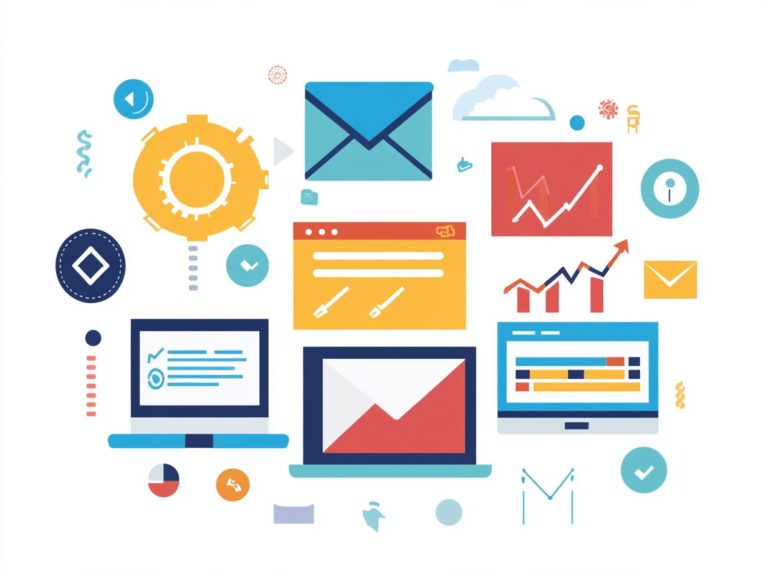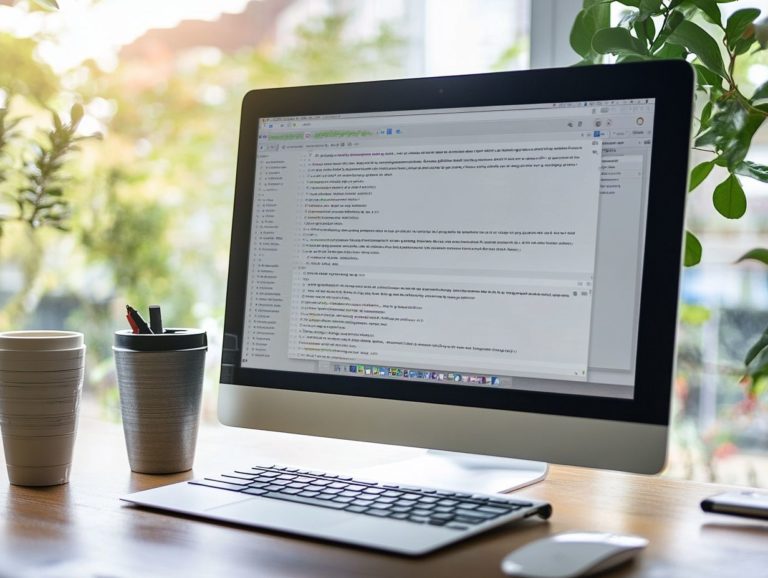The Impact of Email Frequency on Engagement
Let's Set Up Your Lead Generation Strategy
Fill out the form below, and our team will get in touch with you to create a tailored solution for your business.
In today’s digital landscape, email stands as a formidable tool for communication and marketing. However, not all emails are created equal; grasping the nuances of email engagement is vital for your success in email marketing efforts.
This article delves into the significance of email frequency and its impact on reader interaction. Numerous factors come into play, from the types of emails you send to the specific audience you target, including customer preferences and behaviors.
Get ready to discover the secrets of impactful email communication! Explore best practices for optimizing your email strategy, identify key metrics for measuring success, and discover actionable tips to enhance engagement rates while sidestepping common pitfalls.
Contents
- Key Takeaways:
- The Importance of Email Engagement
- Factors That Affect Email Engagement
- Let's Set Up Your Lead Generation Strategy
- The Ideal Email Frequency for Engagement
- How to Measure Email Engagement
- Strategies for Improving Email Engagement
- Let's Set Up Your Lead Generation Strategy
- Frequently Asked Questions
- Let's Set Up Your Lead Generation Strategy
Key Takeaways:
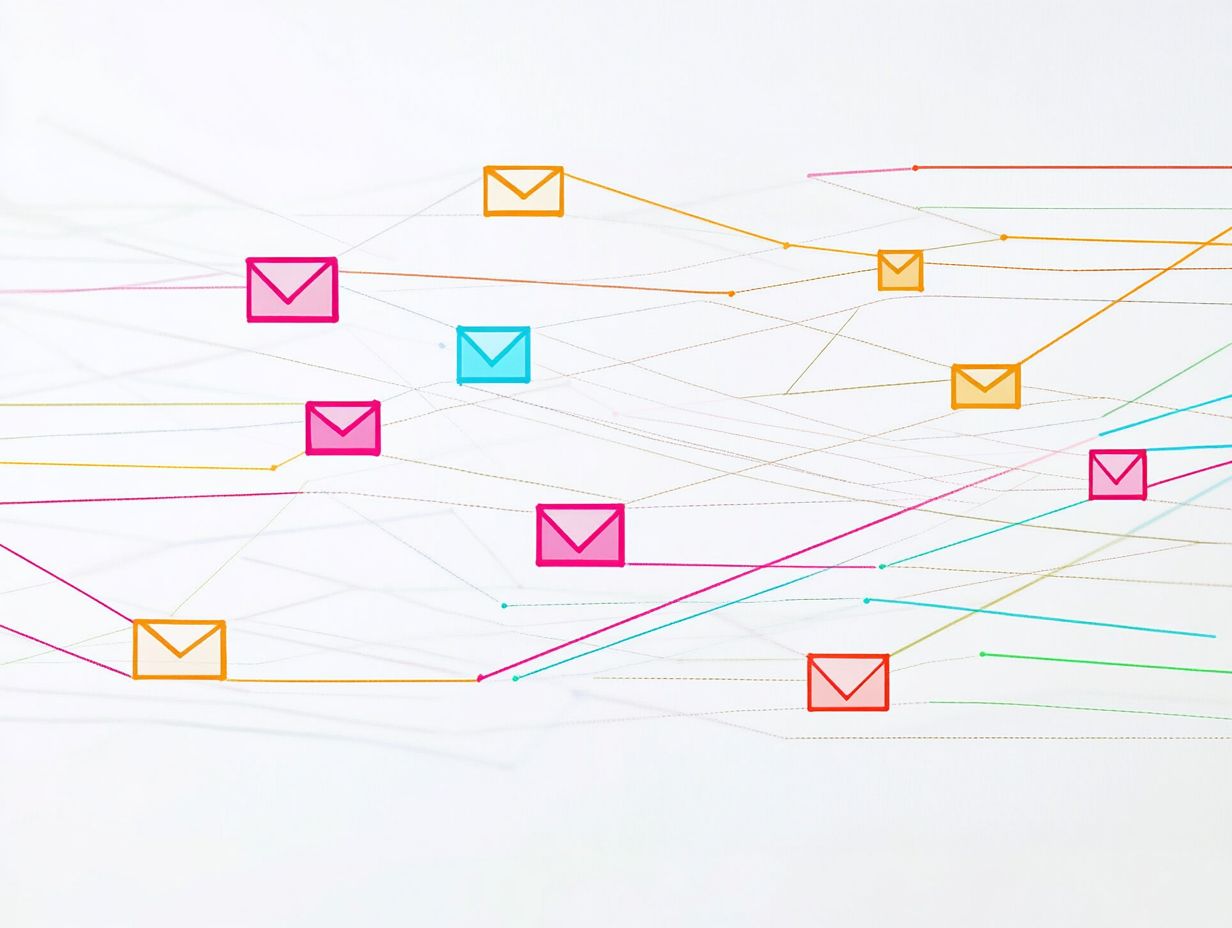
- Email frequency greatly impacts audience engagement. Find the right balance.
- The type of email and your target audience determine the ideal frequency.
- Track key metrics like open rates, click-through rates, and conversion rates to measure engagement.
The Importance of Email Engagement
Email engagement is a vital pillar of successful email marketing strategies. It elevates open rates, click-through rates, and conversion rates. Engaged subscribers are more likely to interact with your content. This increases brand awareness and improves the customer experience, reducing email fatigue.
Personalization is key in nurturing this engagement. When content is tailored to individual subscriber preferences, it resonates on a deeper level, forging a robust connection between your brand and its audience.
Why Email Frequency Matters
Understanding the optimal email frequency is crucial for maintaining high engagement rates while avoiding subscriber fatigue. By finding this balance, you can significantly enhance the overall experience for your audience.
Take a cue from brands like HubSpot and Sephora, which have expertly leveraged personalized email strategies. They adjust their frequency based on user interactions, ensuring recipients receive content that resonates with their interests, enhancing overall email engagement.
By meticulously analyzing email metrics and gathering feedback from subscribers, you can refine the timing and frequency of your emails to keep your audience informed and excited without overwhelming them ultimately driving higher engagement and fostering loyalty.
Factors That Affect Email Engagement
Several factors play a crucial role in shaping email engagement. The types of emails you send, the preferences of your target audience, and the degree of personalization you incorporate into each campaign all significantly impact how recipients interact with your content.
Types of Emails
You ll find various types of emails that marketers utilize in their campaigns, each designed to serve a specific purpose and enhance overall engagement rates.
For example, newsletters aim to inform you with valuable content, updates, and insights, cultivating a sense of community and loyalty. In contrast, promotional emails entice you with special offers or discounts, encouraging immediate action in your online store or for luxury car purchases.
Then there are transactional emails think receipts, order confirmations, and shipping notifications which deliver essential information you expect after making a purchase. Each of these email types plays a crucial role in nurturing relationships, and the quality of the content significantly shapes how you perceive and interact with them.
High-quality, relevant content tends to boost open rates and click-throughs, ultimately driving the success of your overall marketing goals.
Take action today to refine your email strategies and boost your engagement!
Let's Set Up Your Lead Generation Strategy
Fill out the form below, and our team will get in touch with you to create a tailored solution for your business.
Target Audience
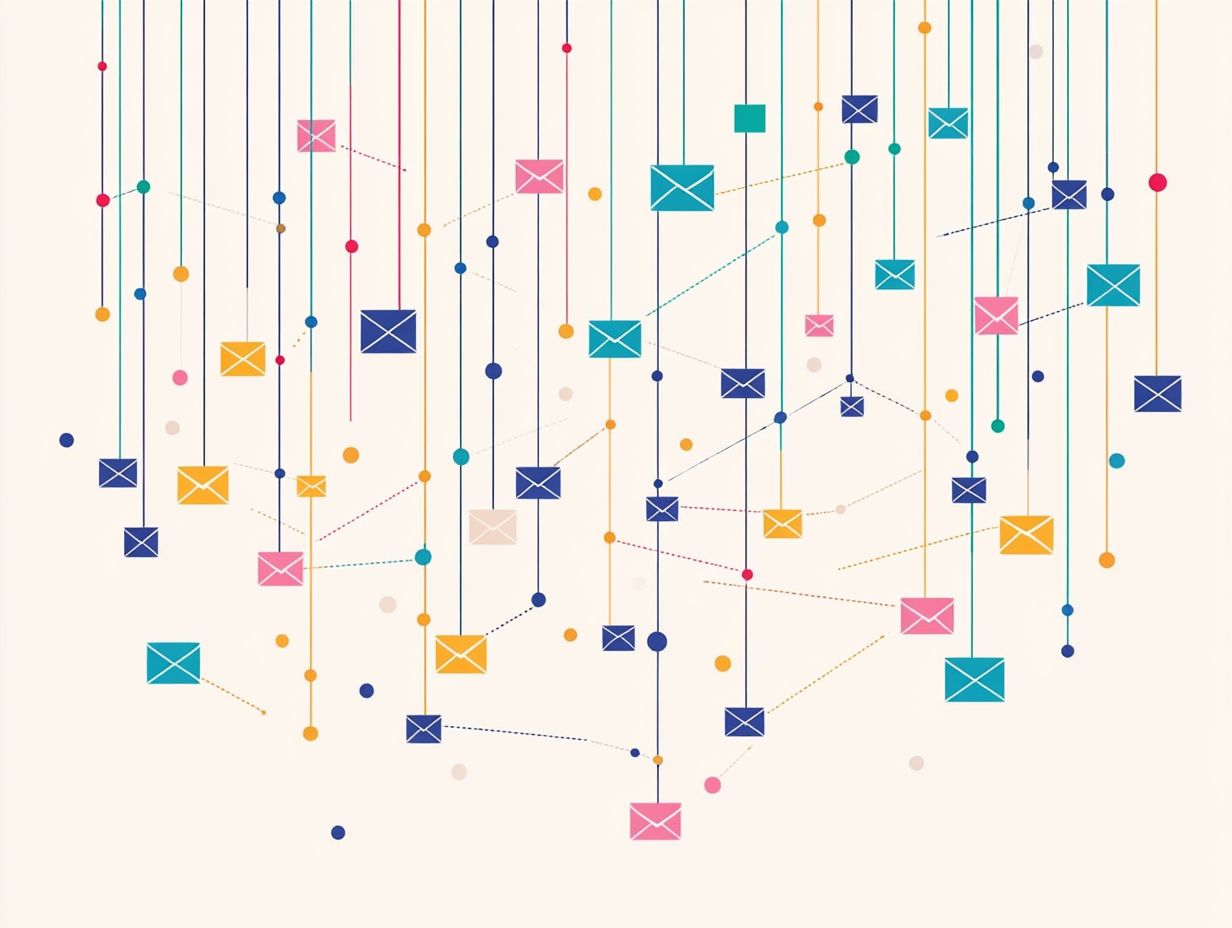
Identifying and understanding your target audience is essential for crafting tailored email campaigns that resonate with subscriber behavior and preferences. This is especially important in sectors like FMCG and B2B services.
By segmenting your email list based on how subscribers engage with previous messages, you can create content that speaks directly to their individual interests. This approach goes beyond mere demographics; it explores the intricacies of purchase history, engagement levels, and even feedback gathered through surveys.
Actively seeking your subscribers’ opinions refines your targeting strategy. This ensures that every email you send is both timely and engaging. Improved targeting enhances open and click-through rates, fosters a deeper connection with your audience, and ultimately boosts their satisfaction and loyalty.
The Ideal Email Frequency for Engagement
Finding the perfect email frequency for engagement requires a balance between consistent communication and honoring subscriber preferences. Leveraging automation tools can enhance efficiency, helping you maximize engagement rates.
This approach fosters a more meaningful connection with your audience.
Best Practices and Recommendations
To achieve the best ways to engage with emails, embrace practices that encompass email frequency, personalization, and a consistent evaluation of your email metrics through testing strategies.
Striking the right balance in email frequency is crucial; too many messages can overwhelm your subscribers and cause significant email fatigue. Conversely, too few can lead to loss of interest and disengagement.
By segmenting your audience based on their behaviors and preferences, you can tailor your outreach efforts. Each recipient receives content that truly resonates with their interests.
Personalization like using the recipient’s name and referencing past purchases can significantly enhance the connection between your brand and the consumer. To gauge the effectiveness of your strategies, track metrics like open rates (the percentage of recipients who open your email), click-through rates (the percentage of recipients who click on a link), and conversion rates (the percentage of recipients who complete a desired action). This ongoing analysis enables you to refine your future campaigns and cultivate a more engaged audience.
How to Measure Email Engagement
Measuring email engagement is essential for gaining insights into your campaigns’ effectiveness. It helps you pinpoint areas for improvement by focusing on key metrics such as open rates, click-through rates, and conversion rates.
By paying attention to these indicators, you can refine your strategies and enhance the overall performance of your email marketing efforts.
Key Metrics to Track
- Open Rates: Measure the percentage of recipients who open your email.
- Click-Through Rates: Reflect the percentage of recipients who click on a link in your email.
- Conversion Rates: Indicate how effectively your emails prompt desired actions.
Diving deeper into these metrics uncovers valuable insights that inform better strategies. For instance, high open rates may signal that your subject lines and timing are spot on. In contrast, click-through rates help you assess the relevance and appeal of your content. Conversion rates are the ultimate test, measuring how well your emails drive sales or secure sign-ups.
Understanding the interplay between these metrics allows for a nuanced analysis, enabling informed adjustments to your campaigns. This approach enhances engagement levels while fostering higher customer satisfaction and loyalty.
Strategies for Improving Email Engagement
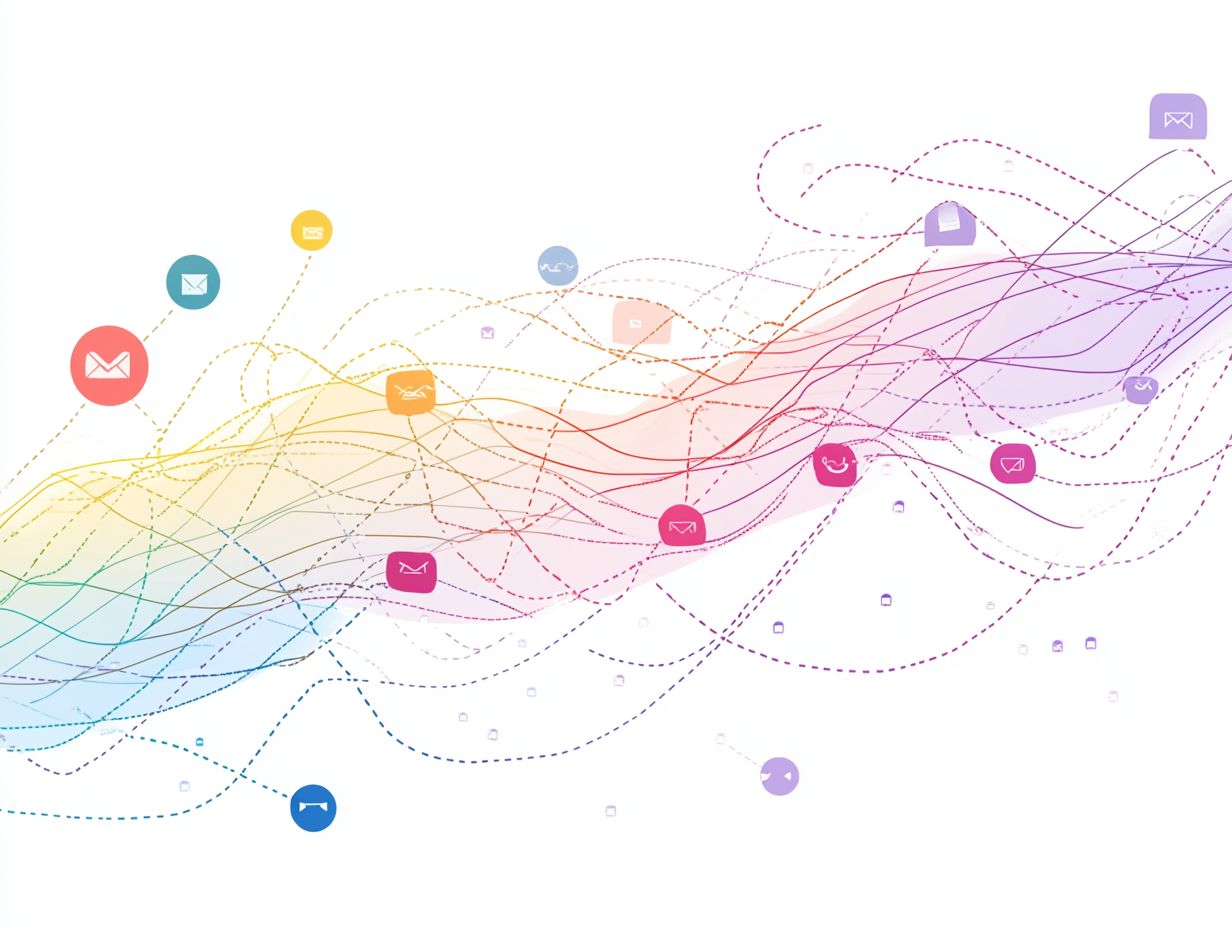
Let's Set Up Your Lead Generation Strategy
Fill out the form below, and our team will get in touch with you to create a tailored solution for your business.
By implementing effective strategies to boost email engagement, you can significantly elevate engagement rates and enhance the overall success of your email campaigns.
Ways to Increase Engagement
You have a wealth of opportunities to elevate engagement within your email campaigns. Focus primarily on effective personalization and actively seek feedback from your subscribers.
By tailoring your content to align with the preferences and behaviors of your audience, you can forge a deeper, more meaningful connection. Implementing strategies like A/B testing allows you to refine subject lines and layouts. This ensures that your content resonates with different segments of your audience, including those interested in travel, like Expedia.
Leveraging insights from subscriber feedback provides valuable information for future campaigns. This helps you understand what truly captivates your audience and refine your email strategy accordingly.
Keep testing and adapting! This boosts engagement rates and builds loyalty with your subscribers, making every message count.
Common Mistakes to Avoid
Avoid common mistakes in email marketing. This is crucial for maintaining high engagement rates and preventing email fatigue among your subscribers.
Many marketers find themselves trapped in the cycle of over-emailing. Bombarding their audience with messages can result in subscriber burnout and hinder engagement.
Poor segmentation can lead to irrelevant content landing in the inboxes of the wrong recipients. This diminishes the effectiveness of any campaign, especially in the competitive realms of business-to-business marketing (B2B) and fast-moving consumer goods (FMCG).
A lack of personalization only exacerbates the issue; generic messages simply don t resonate with individual preferences.
To counteract these pitfalls, utilizing automation tools can truly transform your approach. These tools allow you to segment your audience more effectively, send timely and relevant messages, and personalize email content based on user behavior.
By incorporating these strategies, you can cultivate a more meaningful connection with your audience, keeping engagement levels high and ensuring a valuable experience for every subscriber.
Frequently Asked Questions
What is the impact of email frequency on engagement?
The impact of email frequency on engagement refers to how often a company sends emails to its recipients. This affects the level of engagement, such as opens, clicks, and conversions.
Why is email frequency an important factor for engagement?
Email frequency is important because it determines how much communication a company has with its audience. It can directly impact their interest and response to the emails. For example, companies like Sephora effectively use email marketing to maintain customer interest.
What happens if a company sends too many emails?
Sending too many emails can overwhelm recipients and quickly lead to lost interest or unsubscribes. This can decrease engagement and potentially harm the company’s reputation.
Can sending too few emails also have a negative impact on engagement?
Yes, sending too few emails can negatively impact engagement. It reduces the opportunity for a company to communicate with its audience and keep them updated on new products, services, or promotions. This is particularly relevant for FMCG brands that need to keep their customers informed.
Let's Set Up Your Lead Generation Strategy
Fill out the form below, and our team will get in touch with you to create a tailored solution for your business.
How can a company determine the optimal email frequency for engagement?
The optimal email frequency varies by industry and audience. Analyzing past email performance is crucial for finding the right balance.
Testing different versions of your emails can help you decide the best frequency. HubSpot offers excellent tools for this analysis.
Are there any best practices for managing email frequency for engagement?
Yes! Best practices include segmenting your email list and personalizing your messages. Keep an eye on subscriber behavior to adjust your email frequency effectively.
This approach is especially important in B2B services, where communication must meet specific client needs.



